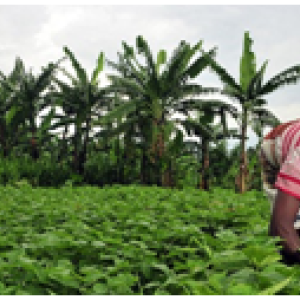This paper presents 12 principles for achieving both better and more food from mature perennial agroecosystems and seeks to contribute to the debate on sustainable intensification. It provides a model, or policy roadmap, for sustainably intensifying productive tropical and sub-tropical agriculture in ways that are both pro-poor and multifunctional – i.e. that enhance agriculture economically, socially and environmentally. The paper examines the role of perennial species, especially trees, in the helping improve staple crop yields; providing nutritious food; reducing poverty, hunger, malnutrition and environmental degradation; improving rural livelihoods; and mitigating climate change.
Abstract:
An analysis of the factors leading to unsustainable agriculture and its associated problems of food insecurity, malnutrition and poverty, identifies a downward spiral of land degradation and social deprivation which is associated with lower crop yields, loss of biodiversity and agroecological function, and declining farmer livelihoods. This spiral is responsible for the Yield Gaps (the difference between the potential yield of a modern crop varieties and the yield actually achieved by farmers) found in many modern farming systems. To reverse this complex downward cycle and close the Yield Gap requires simultaneous crop and soil husbandry, ecological and socio-economic interventions at several different ‘pressure-points’ within this spiral. This paper advocates twelve important principles for the achievement of food security, which including the adoption of a simple, yet highly adaptable, three-step generic model involving perennial crops to kick-start the reversal of the spiral and so the closure of the Yield Gap. This agroforestry approach involves both the use of biological nitrogen fixation from trees and shrubs, as well as the participatory domestication and marketing of new highly nutritious cash crops derived from the indigenous tree species that provide poor people with the traditionally and culturally important foods, medicines and other products of day-to-day importance. Closing the Yield Gap improves food security by improving the yields of staple crops, but also has beneficial social, economic and environmental impacts. Agroforestry involving the combination of many annual and perennial crop species is, therefore, not an alternative to current agricultural systems, but is a way to diversify and enrich them, making them more sustainable. It does this by increasing food and nutrition security, increasing social and environmental sustainability, generating income, creating business and employment opportunities in rural communities and mitigating climate change. Agricultural policy currently tends not to appreciate these outcomes delivered by tropical and sub-tropical production systems which are based on perennial species and meet the requirements of ‘sustainable intensification’.
Citation
Leakey, R.R.B., 2013, Twelve Principles for Better Food and More Food from Mature Perennial Agroecosystems, Proceedings of Perennial Crops for Food Security, FAO Workshop, 28-30 August 2013, Rome, Italy.
The full paper can be found on Roger Leakey’s website here.








Post a new comment »